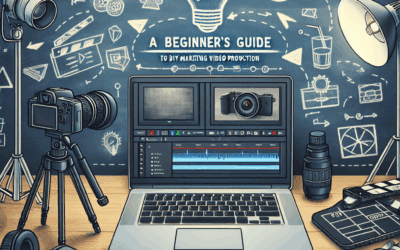Video marketing has become an essential tool for businesses looking to engage their audience and drive conversions. From social media platforms to websites and email campaigns, video content is a versatile and effective way to communicate your message to potential customers. In this comprehensive guide, we will take you through the process of creating a successful video marketing strategy, from storyboarding to distribution.
Step 1: Define Your Goals and Target Audience
Before you start creating your video content, it’s important to clearly define your goals and identify your target audience. Are you looking to increase brand awareness, drive website traffic, or generate leads? Knowing your objectives will help you create videos that are tailored to your audience’s needs and preferences.
Step 2: Storyboarding and Scriptwriting
Once you have a clear understanding of your goals and target audience, it’s time to start storyboarding and scripting your video. A storyboard is a visual representation of your video, outlining the scenes, shots, and transitions. Your script should include the dialogue, narration, and any music or sound effects that will be included in the video.
Step 3: Production and Editing
With your storyboard and script in hand, it’s time to start filming and editing your video. Whether you choose to work with a professional videographer or shoot the video yourself, make sure to pay attention to lighting, sound quality, and framing. Once you have captured all the footage, use editing software to piece together the scenes, add graphics and effects, and polish the final product.
Step 4: Distribution and Promotion
After your video is completed, it’s time to share it with your audience. Distribute your video across various channels, including your website, social media platforms, and email campaigns. Consider creating teaser trailers or behind-the-scenes footage to generate buzz and anticipation for your video. Don’t forget to promote your video through paid advertising to reach a wider audience and drive engagement.
Step 5: Analyze and Iterate
Once your video is live, it’s important to track its performance and make adjustments as needed. Use analytics tools to measure view counts, engagement rates, and conversion metrics. Analyze the data to understand what is working well and what can be improved in future videos. Use this feedback to iterate on your video marketing strategy and create even more effective content in the future.
Conclusion
Video marketing is a powerful tool for businesses looking to connect with their audience and drive results. By following the steps outlined in this guide, from storyboarding to distribution, you can create compelling video content that resonates with your target audience and achieves your marketing goals. Remember to continually analyze and iterate on your video marketing strategy to ensure continued success in engaging your audience and driving conversions.
Need a Affordable Video Marketing Service? Discover our Video Marketing Services
Check out all our Digital Marketing Services
Free Strategy Call




0 Comments